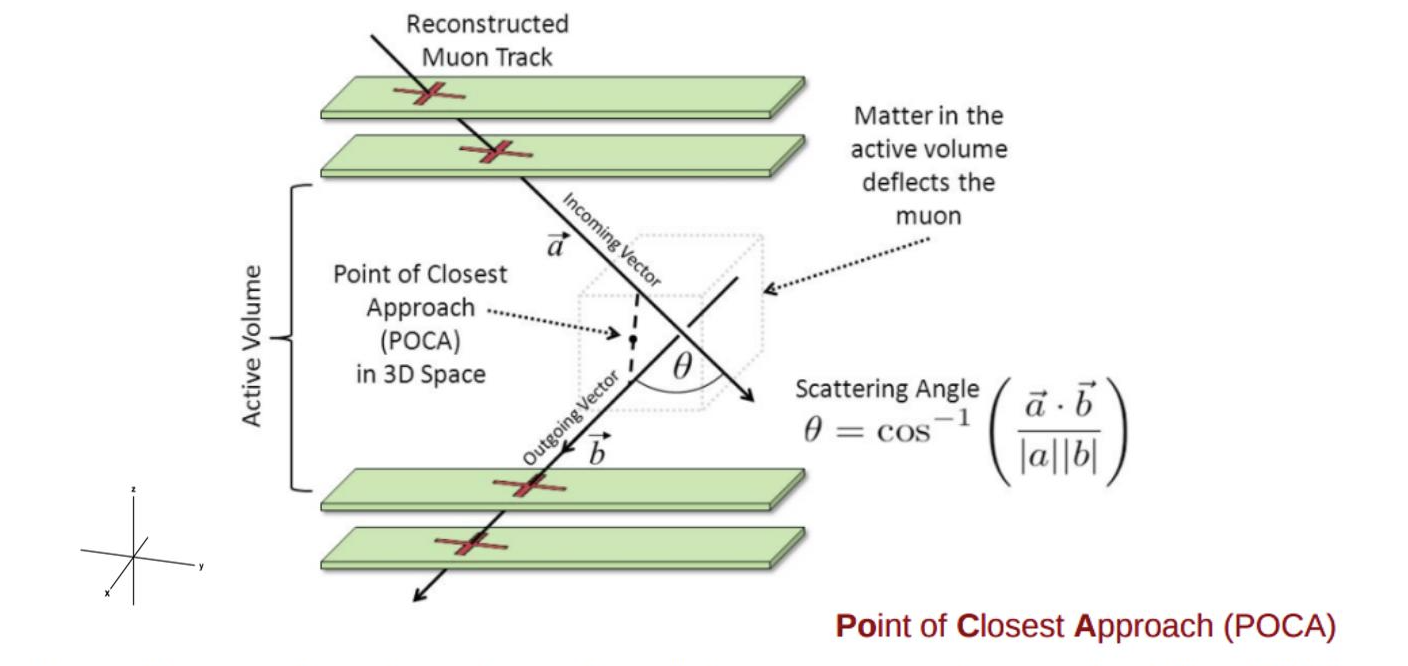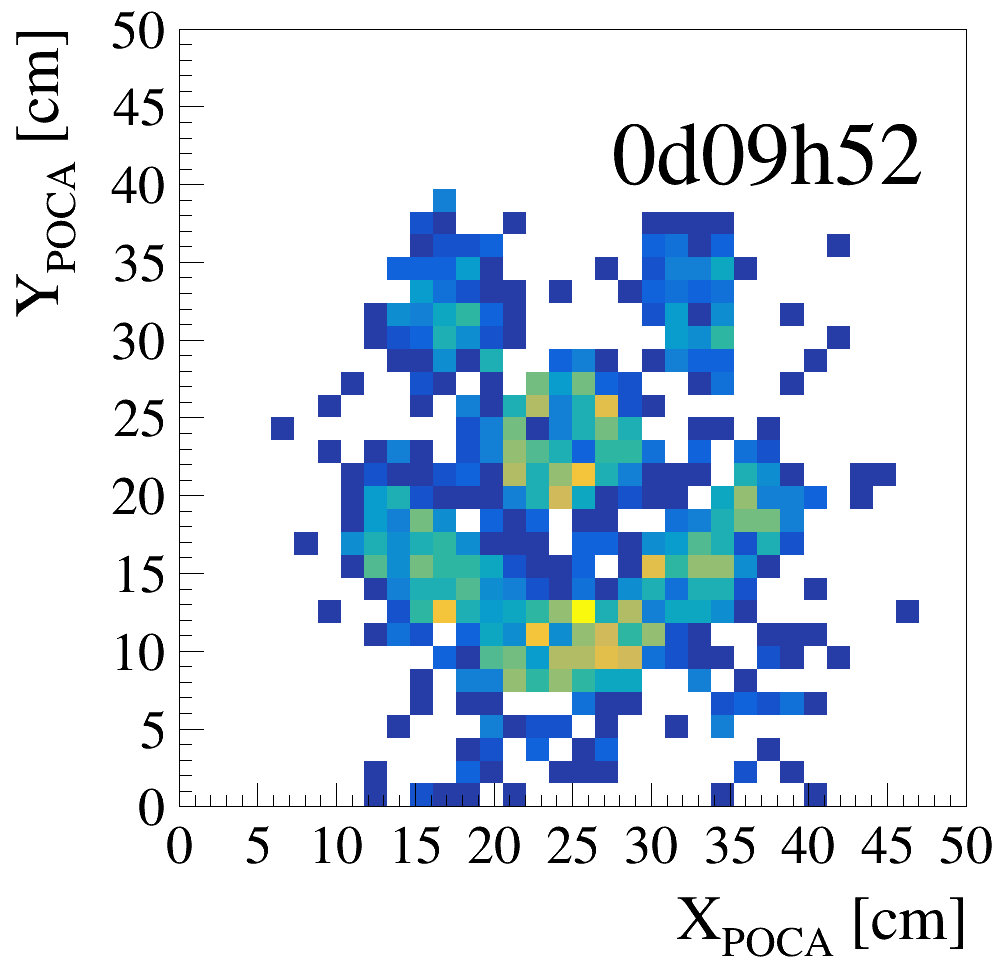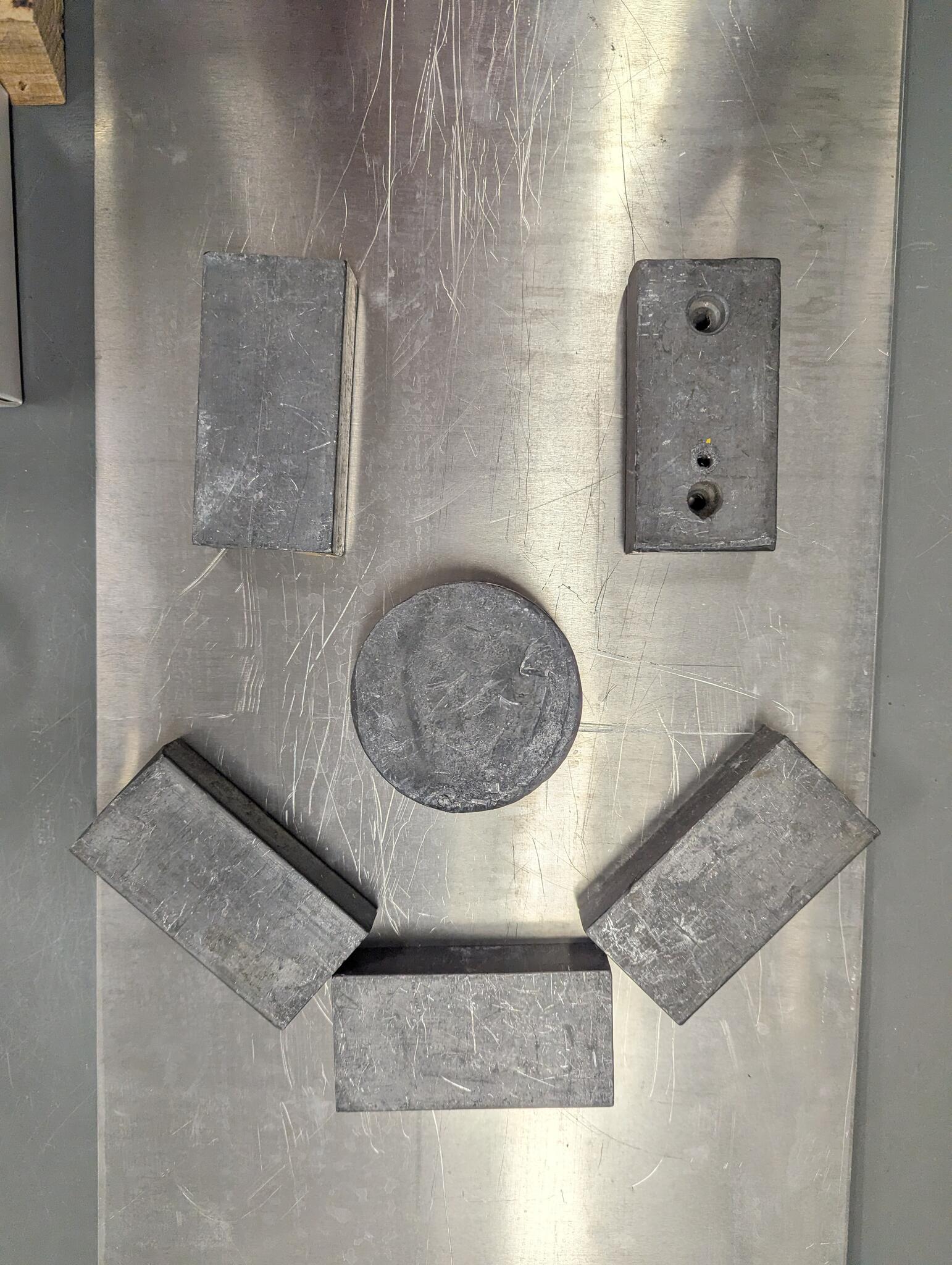This telescope, built by the Alternative Energies and Atomic Energy Commission (CEA) in France, uses gas to detect muons with high spatial resolution. Its potential was revealed to the world in 2017 with the discovery of a cavity inside the Great Pyramid of Giza1. After sensing applications for NEWS-G, we acquired the detector in 2019, and Carter Garrah built a modular support structure for it in 2020. After a few years busy with higher priority activities, the system is finally operational.
After re-calibrating the detector and establishing the basic codes to read data, we started doing some tests.
The detector itself consists of four panels of micromegas detectors through which gas (here: Ar+0.93% Isobutane) is circulating. The micromegas are equipped with readout strips triggering when a muon is detected. The 0.5mm strips allow to measure the X and Y positions of the muons with a precision of close the 0.1mm. We use only events where the four panels are triggered together.
The idea, is to “see” lead blocks in between the detectors panels, using the deflection angle on muon tracks. We are assuming the scattering occurs at a single point in space. The illustration below depicts the setup we used, except that in our case, the four panels (in green) were at the same distance on the z-axis.
We can see the reconstructed tracks, using the positions at which muons were detected on the two upper and two lower panels. Using those reconstructed tracks, we can compute the Point Of Closest Approach (POCA) which is the closest point to the two tracks. Then we compute the scattering angle as shown below and we can plot the scattering angle as a function of the z-position of the POCA.

Doing this allows us to reconstruct the position of the lead blocks in the xy-plane. We tested it with a smiley face made of lead blocks and produced the animation below after three days of taking data!
|
|
 |
 Queen's Physics Department
Queen's Physics Department